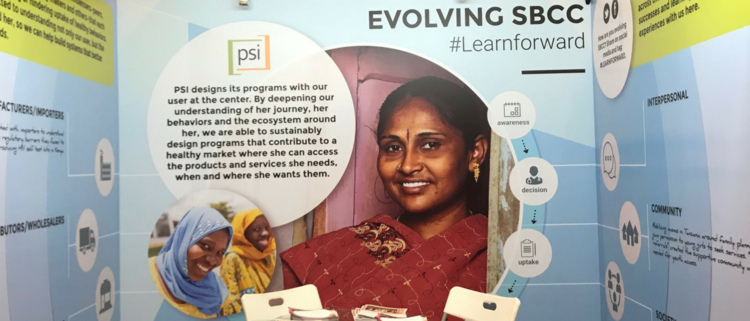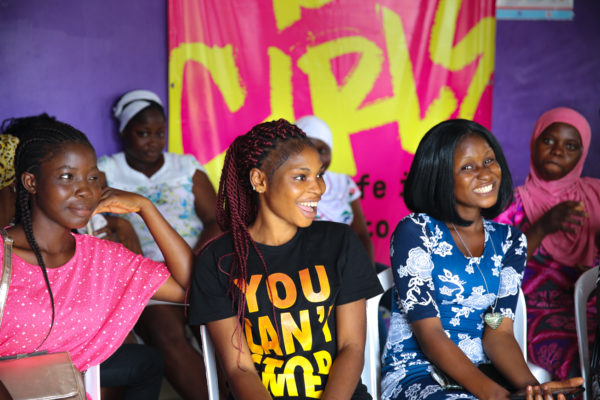By Beth Skorochod, Senior Technical Advisor for Social and Behavior Change, PSI
The attendee hovered just outside PSI’s booth at the Social and Behavior Change Communication Summit (SBCC). She flicked her conference badge as she looked from me to the booth’s blank wall. A bolded question caught her gaze: How have you worked with influencers across the health system?
“You want us to write an answer right on the booth?” she asked. I nodded, handing her a black Sharpie. She uncapped the marker, placing pen to wall as she, at first tentatively and then avidly, scribbled out her answer.
We are working with mothers’ groups to increase rates of institutional delivery targeting youth through music, she wrote. As she explained, this community level intervention was leveraging existing local groups of concerned moms and adding an innovative twist by using music to draw in young people.

I smiled. This was exactly what I was hoping for.
Our booth at the 2nd International SBCC Summit was not simply a showcase of how we, at PSI, navigate the complexities of driving social and behavior change (SBC). It was also a prime opportunity to learn from the successes and challenges our peers confront in designing resonant and sustainable health interventions.
OUR STORY: SARA AT THE CENTER
For PSI, SBC is key to achieving health impact changing behaviors by addressing opportunities, ability and motivations across the enabling public health environment through traditional and innovative channels.
But as the answers on our SBCC booth wall reflected: how SBC is put into practice varies across the global health community.
At PSI, we design our programs with the user at the center; for us, this is “Sara,” our global archetype of the consumers we serve.
By deepening our understanding of Sara’s journey, her behaviors and the ecosystem around her, we are sustainably designing programs that contribute to a healthy market where she can access the products and services she needs, when and where she wants them. Key to this understanding is not only learning how Sara interacts with influencers at interpersonal, community and societal levels, but understanding how the market and its players—manufacturers, distributers, retailers and providers, as well as policymakers and regulators—impact Sara’s behavior. While Sara may not have a touch point with these actors, their behaviors are no less important in her ability, opportunity and motivation to take up a desired behavior. A holistic grasp at all levels enables us, as an implementing community, to tailor how we communicate to ignite lasting and effective change.
COMMUNICATING FOR CHANGE, WITH AND FOR OUR CONSUMERS
Human-Centered Design (HCD) is one way PSI builds out our understanding of users, their journey, and the ecosystem around them to design programs that enable change and lead to a healthy market. Through HCD, we work alongside the people we serve to design interventions responsive to what beneficiaries say they want. It’s a creative problem-solving method to ensure we engage users, deepen insights and prototype innovative solutions.
And it’s working.
From Adolescents 360’s reproductive health programming to malaria treatment in Cambodia, to voluntary medical male circumcision in Zimbabwe and more, we are recording breakthrough results that keep Sara at the core of how we design, how we develop and how we implement health programming.
We, at PSI, will continue to evolve and improve our approach to SBC. But this isn’t our journey alone. SBCC has only reinforced my commitment to keep learning from others—especially those brave enough to write about their own successes and failures directly on the wall of our SBCC booth!





